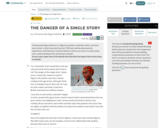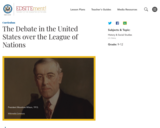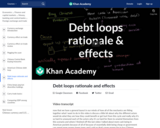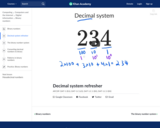
Introduction to DNA cloning.
- Subject:
- Biology
- Genetics
- Life Science
- Material Type:
- Lesson
- Provider:
- Khan Academy
- Provider Set:
- Khan Academy
- Author:
- Sal Khan
- Date Added:
- 06/02/2016

Introduction to DNA cloning.

How DNA is copied (replication). How information in DNA can be used to make a protein.

The DOM (Document Object Model)

Students learn how the process of soil solarization is used to pasteurize agricultural fields before planting crops. Soil solarization is a pest control technique in agriculture that uses the sun’s radiation to heat the soil and eliminate unwanted pests that could harm the crops. The approach is compared to other pest control methods such as fumigation and herbicide application, highlighting the respective benefits and drawbacks. In preparation for the associated hands-on activity on soil biosolarization, students learn how changing the variables involved in the solarizing process (such as the tarp material, soil water content and addition of organic matter) impacts the technique’s effectiveness. A PowerPoint® presentation and pre/post-quiz is provided.

Now we add a damper to our spring.

Learn about the properties of solid, liquid, and gas while dancing with the famous music group, The Gregory Brothers!
To help understand how water changes states of matter, Scientist Sam brings in the musical group The Gregory Brothers to help teach about the states of matter through an interactive dance. The viewer dances like a solid, liquid and gas and learns that water can change states of matter when temperatures are below 0 degrees Celsius or above 100 degrees Celsius.
Learning Objective:
Classify matter by physical properties, including shape, relative mass, relative temperature, texture, flexibility, and whether material is a solid or liquid.

In this lesson from CommonLit, the TED talk "The Danger of a Single Story" by Nigerian novelist Chimamanda Ngozi Adichie is used to show how experiences shape our view of the world. The lesson offers teachers a number of activities to include guiding questions, assessment questions, and discussion prompts. Teachers are able to access additional texts based on similar themes, literary devices, topics and/or writing style. The lesson also supports Culturally Relevant Teaching.

Data on Chinese M1 Increase in 2010. Created by Sal Khan.

Learn about the balance of payments (BOP) by taking a look at the BOP for the United States in 2006 and how it relates to China's currency. Created by Sal Khan.

Data on Chinese Foreign Assets Increase in 2010. Created by Sal Khan.

Example questions analyzing data to justify claims in experiments.

In this video, David explains how Louis De Broglie got his Nobel Prize for the idea of matter having a wavelength.

Deaths in World War I

American foreign policy continues to resonate with the issues surrounding the debate over U.S. entry into the League of Nations-collective security versus national sovereignty, idealism versus pragmatism, the responsibilities of powerful nations, the use of force to accomplish idealistic goals, the idea of America. Understanding the debate over the League and the consequences of its ultimate failure provides insight into international affairs in the years since the end of the Great War.

Positive and negative effects of China's devaluing of their currency. Created by Sal Khan.

Learn how to debug in your webpages on Khan Academy using console.log() and the Chrome Developer Tools.

How to debug a line of code in JavaScript.

In this lesson, students learn that sound is energy and has the ability to do work. Students discover that sound is produced by a vibration and they observe soundwaves and how they travel through mediums. They understand that sound can be absorbed, reflected or transmitted. Through associated activities, videos and a PowerPoint presentation led by the teacher, students further their exploration of sound through discussions in order to build background knowledge.

Review how the decimal number system works before diving into the binary number system. The decimal number system and binary number system work the same way; the only difference is what each digit represents (0-9 versus 0/1). Created by Pamela Fox.

Multi-year initiative recognizing the importance of the Declaration of Independence in the history of the U.S. and the world.